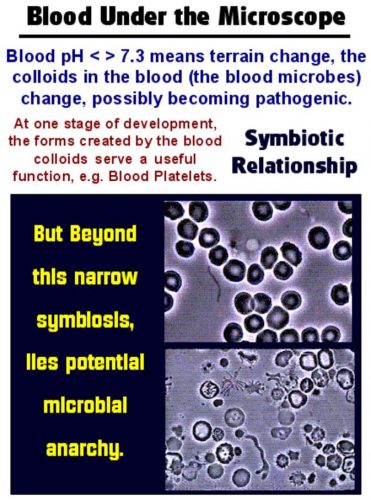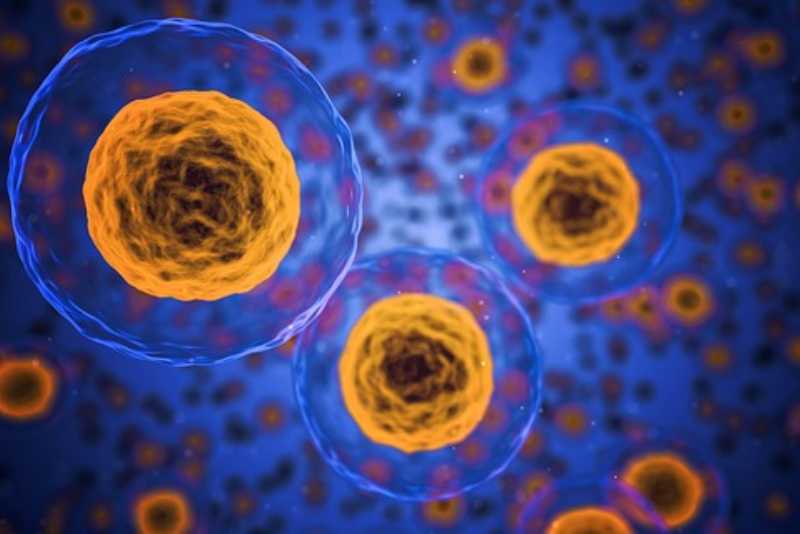Colloids are particles that measure .01 to .0001 microns in diameter (that’s about 4 hundred thousandths to 4 millionths of an inch.) It has been hypothesized by some that there is some point in space and time where the colloids of life (the smallest of particles capable of expressing biological life in the physical realm) were begotten from the colloids of light (the spiritual realm).
The first individual to maybe catch a glimpse of this occurrence was Anton Leeuwenhoek, who lived in the 17th century. He had ground glass to create the first microscope. In observing some rainwater he collected, he made note that there were teeny creatures moving about. Wondering where they came from, he did an experiment. He collected clean fresh rainwater and sealed it in pipettes. At first, nothing was in the water. Hours and a few days later, still nothing was in the water. But on the fourth day, all of a sudden, little teeny creatures appeared. Where did they come from? It was spontaneous generation. Life out of light.
Leeuwenhoek took his research to Robert Boyle, the father of chemistry as we know it, and to Sir Isaac Newton who wrote many of the principles of physics. They did not believe that life could beget from light, or in their way of thinking, from nothing. This was a time when the church played a big role in every major decision that was made. To have life you must have procreation, a mother-
But what the germ theory failed to explain then, and fails to explain to this day, is the answer to the question, from where exactly do germs come? Where is the mother-
Germs and microbes are physical life forms. Life forms which have evolved from something. Since that something is not physically measurable, then it must be something that is on a higher vibrational or spiritual level. Or so it goes.
Hence, colloids of light, which beget the colloids of life.
Speaking about colloids of light may just be the musings of imagination. How can there possibly be a spiritual or higher vibrational particle of existence (which for lack of better understanding is termed here a colloid of light) which is unseen and unmeasurable? And how can a supposed colloid of light become a colloid of life?
In answer to the first question, it could be said that empirical science only goes as far as the current state of physical technology allows. To go beyond that, you have to turn to inner guidance, intuition, and quite frankly, to a quantum physical or spiritual perspective.
Regarding the second question, how can colloids of light become colloids of life? Here we propose an experiment. From the writings of Dr. Kurt Donsbach, he calls this experiment, “making protozoa”. The protozoa is among the most primitive and simplest of life forms. In any biology textbook, you’ll never find a description of where protozoa come from, but yet you can create them in a test tube. If you take sterile water, and put in some fresh hay or other grasses, then mix it up, you will have a solution that, upon microscopic examination, has nothing in it. You can scrape the blades of grass with a knife and observe the scrapings and you will still find nothing. But cork the tube, wait a few days and come back. Your mix will be teeming with bacteria, amoebas and protozoa. Where did they come from? Under time-
After a few days the little mass begins to move with a rhythmic, pulsing motion. Eventually the pulsing motion becomes more pronounced and the glob appears to gather more energy. Soon it breaks away from the grassy shaft and is a living mass, classified in biology texts as protozoa. From this point it can differentiate itself and other microorganisms appear. Fascinating isn’t it? Just what was that pre-
Colloids of light –
It is a recurring suggestion by some that just as in our protozoan experiment, when turning to the blood, we find colloids of life and those colloids of life have an urge to merge. How they merge, what they turn into, their developmental function, all will be dependent upon the terrain or the environment to which they are exposed. Voila, we’ve just uncovered the pleomorphic theory. Microbes change based upon the environment in which they live.
The human body strives to maintain the pH of the blood at around 7.3. Above or below this level, the colloids in your blood merge into forms that can look kind of scary when viewed under a microscope. One contention is that these forms constitute pathogenic microbes. Another (more likely scenario based on the latest DNA studies discussed later) is that these forms seen in the blood are not really life forms with their own DNA, but are forms that develop in synchronicity with pathogenic situations that develop as a result of internal terrain modifiers which also affect immune function. In essence, the vast majority of scary forms seen in the blood are re-
Taking another look back at Enderlein, he believed that at one stage of development, the forms created by the colloids of life in the blood serve a useful function. Platelet formation he gave as one example. He suggested that platelets are formed out of “living” colloids in the blood and they serve us through the blood clotting mechanism — a mechanism without which we would bleed to death from even the smallest injury. But, just as the colloids that merge together as platelets might serve us well, if the terrain of our blood is shifted due to an inverted way of eating and living, even these platelets themselves can change their shape, or clump together, or march in step with rising pathogenicity. (More on these concepts later.)
The colloidal substances in the blood can form together in a myriad of ways, specifically how and to what appearance is dependent on the environment—chemical makeup, pH, etc. From bacterial, to viral, to fungal –
The microscope is an incredible tool to delve into this world and educate oneself on the reflection of disease process. By looking at live blood immediately after taking it out of a finger, the myriad forms in the blood become apparent. What forms you might see could very well depend on your overall state of health.

Above are two views of live blood as seen with a video microscope. The picture on top shows 1) the red blood cells floating in plasma. 2) A microbial looking form. (Enderlein called this type of form a synascit but what we know in hematology to be a basic myelin, globin or phospholipid oriented formation. This is basically cellular breakdown by-
An Interesting Case History
The picture of blood above of the cancer patient leads to a pertinent story. The story involves how this patient came about seeing her cancer go into remission. She was diagnosed as inoperable and her medical doctor told her because of her very poor state of health, there was nothing more they could do and she had maybe 30 days to live.
At the time her husband had been seeing an alternative care practitioner for a problem of his own. In his practice, this particular doctor happened to work with a microscope for patient education. As a last ditch effort the man brought his wife in, hoping that maybe something, anything, could be done. As they sat in the office, she had such low energy she could barely keep her head held up. Her face was washed out as if she had no blood.
A drop of blood was taken from her finger and put under the microscope, then the doctor peered into the eyepiece. What he saw, or more to the point, what he didn’t see, astonished him. The woman had practically no red blood cells, and what she did have didn’t look very good. There were microbial looking forms all over the place.
Given the situation, where here is a woman that is next to dead, what can you do? Well, the doctor said he didn’t know if it would help, but he pulled four key nutritional substances off his shelf and gave them to her. These were: a total vitamin and mineral complex, digestive enzymes, a proanthocyanadin (pycnogenol) antioxidant compound, and heavy duty metabolic body enzymes. After a little bit of talking about these substances and nutritional concepts, the couple left the office. When the doctor peered into the microscope after they left, which was about 30 to 40 minutes later, he couldn’t believe his eyes. The parasitic looking creature elements were everywhere and it looked like they consumed everything left in the blood. The picture on the previous page is some of what he saw.
One week after taking the nutritional supplements, the woman had renewed energy and was actually feeling better. She went back to her regular physician and wanted to have a blood test. The test was performed and her red blood cell count had shot up dramatically. The doctor was rubbing his hands together thinking that now they could operate and re-
With her renewed energy and new hope, she started seriously looking at alternative treatment options. She settled on a course of action and found what she wanted south of the border in Mexico. 90 days later she was doing fantastically well, with her cancer in remission.
What got her to turn the corner? Another health care practitioner with a microscope and a different point of view. One who understood the importance of key nutritional elements to the body. The body is such an incredible thing that if you work with it correctly, instead of against it, it is capable of tremendous self healing.
